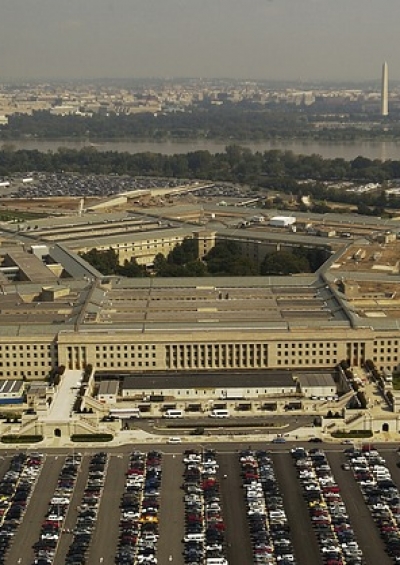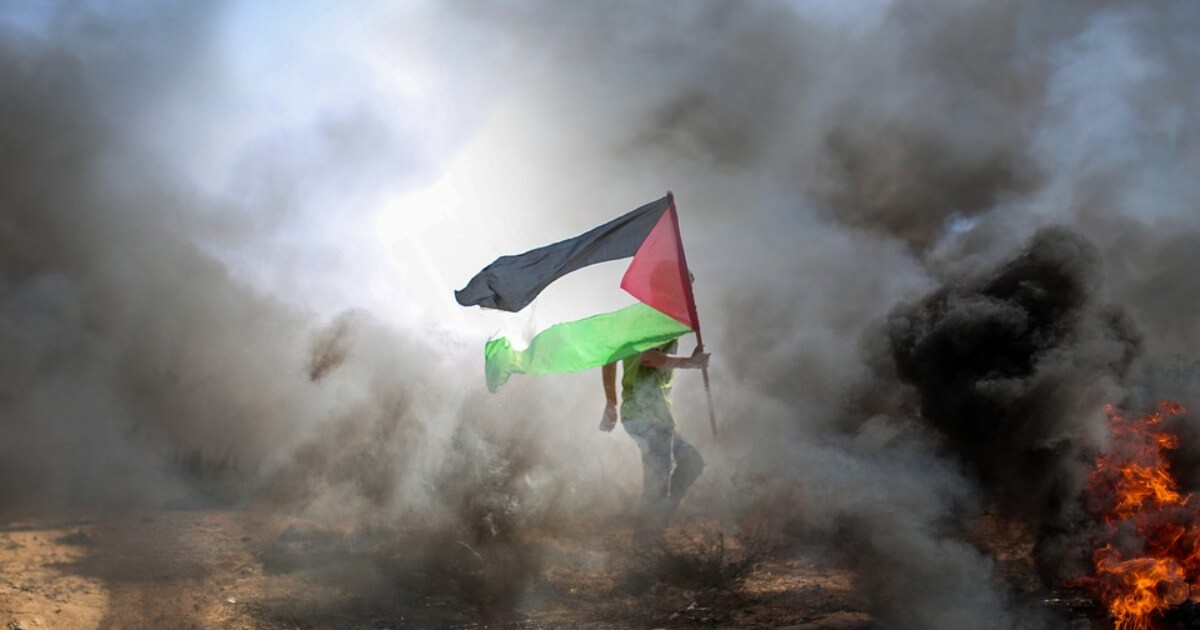US Military: Too Much Tactics, Too Little Strategy
America and its military’s proclivity for perpetual war – and what that means for the war against Islamist terrorists.
July 20, 2017

First Team Sir. We are devastatin’ the enemy in the Tagab Valley and doing amazin’ work securin’ Route Vermont.
–Anonymous Brigadier General, Commander’s Update Brief, Afghanistan, Any Day, Any Week, Any Year, 2007-2017.
The United States and its allies have been fighting terrorists and insurgents for almost 16 years. It has some of the best-equipped, most-seasoned, and best-led forces in its history of fighting wars.
Those forces have won a number of battles, conducted a host of strikes, and captured or killed many terrorists, including Osama bin Laden.
Never-ending war
Yet, there are more murderous Islamist groups around the globe today than there were on 11 September 2001, and there is a strategic stalemate in Afghanistan. Efforts to defeat Islamist terrorists around the globe remain incomplete and fleeting.
The ends of these wars against Islamist militant groups are not in view. Worse, it is not certain that these wars will end well at all.
A key aspect of this lies in the axiom that the purpose of war is to serve a political end, but the nature of war is to serve itself. War serves itself when it is unguided or unconstrained by reason and policy, or if the political end is not viable within the means that states are willing to commit based on the perceived value of attaining that end.
Tactical and operational kill-and-capture actions do indeed disrupt insurgent and terrorist networks, but the gains are impermanent, particularly if those networks retain external support and sanctuary.
Beyond the absence of a viable long-term strategy, other factors contribute to what seems to be a state of ground hog war. There are the myriad murderous Islamist zealots who are animated by an apocalyptic and interpretive Salafi-Wahhabi-Jihadist creed.
The pools of fanatics who are willing to blow up Westerners and themselves remain deep. It seems unlikely that killing them all is a realistic strategic aim.
Supporting terrorism
There are also the countries in South Asia and the Persian Gulf areas that provide support to Islamist militants but pretend to be on our side in this fight against armed Islamist groups.
Some of these are more complicit and harmful in scope and magnitude of support, providing funds, jihadist recruits, arms, training, advisors and sanctuary. Pakistan and Saudi Arabia are standouts in odious complicity.
But the object of this article is another factor that helps contribute to protracting wars absent strategy. This is the military’s inclination for producing pollyanna tacticians and its disinclination for creating sober strategists. The reality is that the U.S. military excels at turning out tacticians – and does not excel at developing strategists.
During several tours in Afghanistan, candid reporting of bad tactical news was seldom apparent. The quote at the beginning of this essay is an aggregate characterization from multiple years of my observations while attending battle updates.
Indeed, a hallmark for these types of updates was the ubiquity of slides that were filled with green gumballs combined with maps with many areas colored in green. Daily, weekly and monthly updates with a preponderance of green testify to the Pollyanna phenomenon.
Green is good, red is bad
For military briefings, green is good and red is bad. Reports of everything in the green, successful, good, all the time, in the context of a prolonged stalemate, are conspicuous clues to overly optimistic filters.
Interestingly, two years ago, the U.S. Army War College published a monograph about the erosion of veracity in reporting. The study explored the notion of ethical fading that stems from a can-do culture combined with a demands-means mismatch.
In Afghanistan this has been evident weekly, monthly, and yearly in the form of Pollyannaish reporting and updates from the one-star and two-star commanders.
Newly minted one-star generals, in particular, seem to be the most enthusiastic Pollyannas, bubbling with good news in bad places.
The emphasis on “can do,” “decisive victory,” “the big win,” and “pushing the ball across the goal line” are so ingrained in military culture that reporting failure, setbacks, or even just a lack of progress with indigenous forces, is a rarity. Reports like the quote at the beginning of this piece are the norm.
Confusing tactics for strategy
What has also been evident in Afghanistan, Iraq, and around the world, has been an increasing proclivity for confusing tactics for strategy and substituting jargon and platitudes for critical thought and cogent debate.
Over the years, one- and two-star Army and Marine generals have confidently and emphatically asserted notions, like Sangin must be held at all costs because of its strategic nature.
Sangin is a town in northern Helmand Province. It has tactical value, and it even has some operational salience, but it is not strategic in nature.
Another time, an exceedingly orthodox and fatuous junior colonel, the chief of staff for a special operations joint task force, very seriously posited that a modest growth in capacity would be a “tipping point.”
Echoes of Vietnam
Nescient platitudes like this harken back to another war without strategy – Vietnam.
As an example of gibberish, an Army brigadier stated that, “we just set up an expeditionary advisory package in perpetuity that we will pull out of in two weeks.” This type of muddle is not infrequent.
There are also the steely-eyed operators from the special mission task force who are superior tacticians and superb briefers who excel at direct action missions but who seem to utterly misconstrue the essence of strategy.
These commanders consistently employ the word strategy when they are in actuality discussing measures of performance, or raids and strikes that disrupt enemy networks, but only ephemerally, by removing key targets from the operational environment.
Perpetual and disruptive action is this group’s – Team America’s – existential postulation. It thrives on it but it does not bring strategic results, only perpetual war.
Military culture
To summarize the problem, there are legions of seasoned tactical professionals who employ the best resources and technology but serve in institutions with cultures that produce Pollyanna junior-general-officer leaders who are seemingly incapable of broaching failure or exhibiting strategic thinking.
These legions are fighting perpetual wars against, as of yet, inexhaustible sources of Islamist militants with the goal of killing all disbelievers. Yet, the Islamists benefit from support and sanctuary from non-state actors and states machinating to the detriment of the West.
So, what is there to do about our Pollyannas and this war without end? Are more tactics and violent actions without strategy rational? Is escalating the violence by firing more missiles, dropping more bombs, and sending more troops with overly optimistic generals, a sane response?
Massive air-burst-ordinance (MOAB) bombs disrupt, they even unhinge, but their effects are fleeting and do not bring about strategic ends.
To better recognize and accept the difficult realities and tenuous prospects for anything closely approximating clear-cut victory in the post 9/11 wars, it will be essential to confront and curb the U.S. and other allied militaries’ propensities for producing Pollyannas.
It’s up to military institutions
U.S. Military institutions need to start promoting, valuing and bearing ruthless candor and bad news. This phenomenon is not purposeful mendacity, to be sure. Rather, it is an acculturated ethical blurring, founded in and stemming from cultures that value and reward only unqualified success, victory and hyper-optimism.
That, combined with a focus on tactics and science, and an absence of strategy, help account for the contributing part that our Pollyannas play in prolonging these wars.
Our forces have been fighting and killing bad people in bad places for years and we are far from the end, and not close to any notion of victory. It may still be just the beginning of a very long war against a host of murderous zealots and their supporters.
Encouraging candor and heterodoxy, while accepting and learning from failure will better serve the causes in these wars than the orthodoxy and conformity of Pollyanna generals will help these causes.
Equally important is the imperative to better develop and educate leaders to think more critically and strategically.
Tactics are simpler than strategy
The sad fact is that few U.S. leaders transcend tactics when they advance to general officer ranks. Military tactics are simpler and algorithmic.
Strategy is more complex and heuristic. The United States continues to excel at creating captains of infantry companies and commanders of battalions, but we continue to fail at developing captains of war and strategy.
When facing an insurgency compounded with terrorism, if the counter-insurgents are not winning, they are losing. The insurgents and terrorists win by not losing. The Islamist militants’ continued will and capacity to bomb and murder, while sustaining and regenerating losses year after year, precludes their defeat.
Our side has won battles and succeeded in many actions year after year, but this means nothing when facing a stalemate stemming from strategic asymmetry.
The deep bench of jihadists, coupled with continuous support and sanctuary from external sponsors, presents an asymmetry in capacity and will that has no end in sight if the sources of the ideology and sanctuary remain unimpeded.
Pakistan’s role
In South Asia, the biggest reason for perpetual war is the support that the Taliban receive from Pakistan. The Taliban would have diminished into marginality by now without Pakistan’ sanctuary and support.
It would be hard to imagine a worse ally. It is even harder to fathom that after what happened on 9/11, that the U.S. would choose to rely on the one country on the planet with its capital city named after Islam to fight a war against the Islamist terrorists who perpetrated the 9/11 raids.
Pakistan is a country that has played one of the most significant roles in creating Islamist terrorists over the last 50 years. Pakistan has continued to be the biggest exporter of Islamist terrorists and it has been doing so with impunity.
A failure to be ruthlessly candid about what tactics can accomplish and not accomplish in the face of the huge strategic obstacles that inhere in sanctuary and external sponsorship helps prolong these wars. Too many Pollyannas are part of the problem and not part of any strategic solution.
Takeaways
The purpose of war is to serve a political end, but the nature of war is to serve itself.
Kill-and-capture actions do indeed disrupt insurgent and terrorist networks, but the gains are impermanent.
The pools of fanatics who are willing to blow up Westerners and themselves remain deep.
US military institutions need to start promoting, valuing and bearing ruthless candor and bad news.
Few US leaders transcend tactics when they advance to general officer ranks. Tactics are simpler than strategy.

